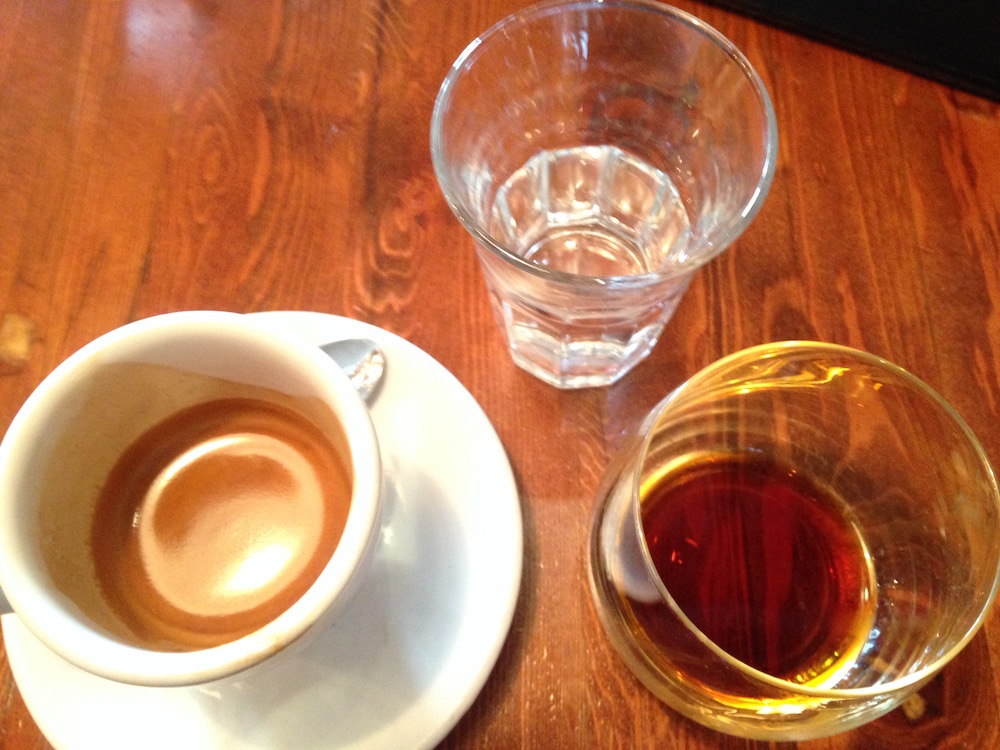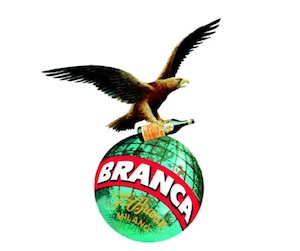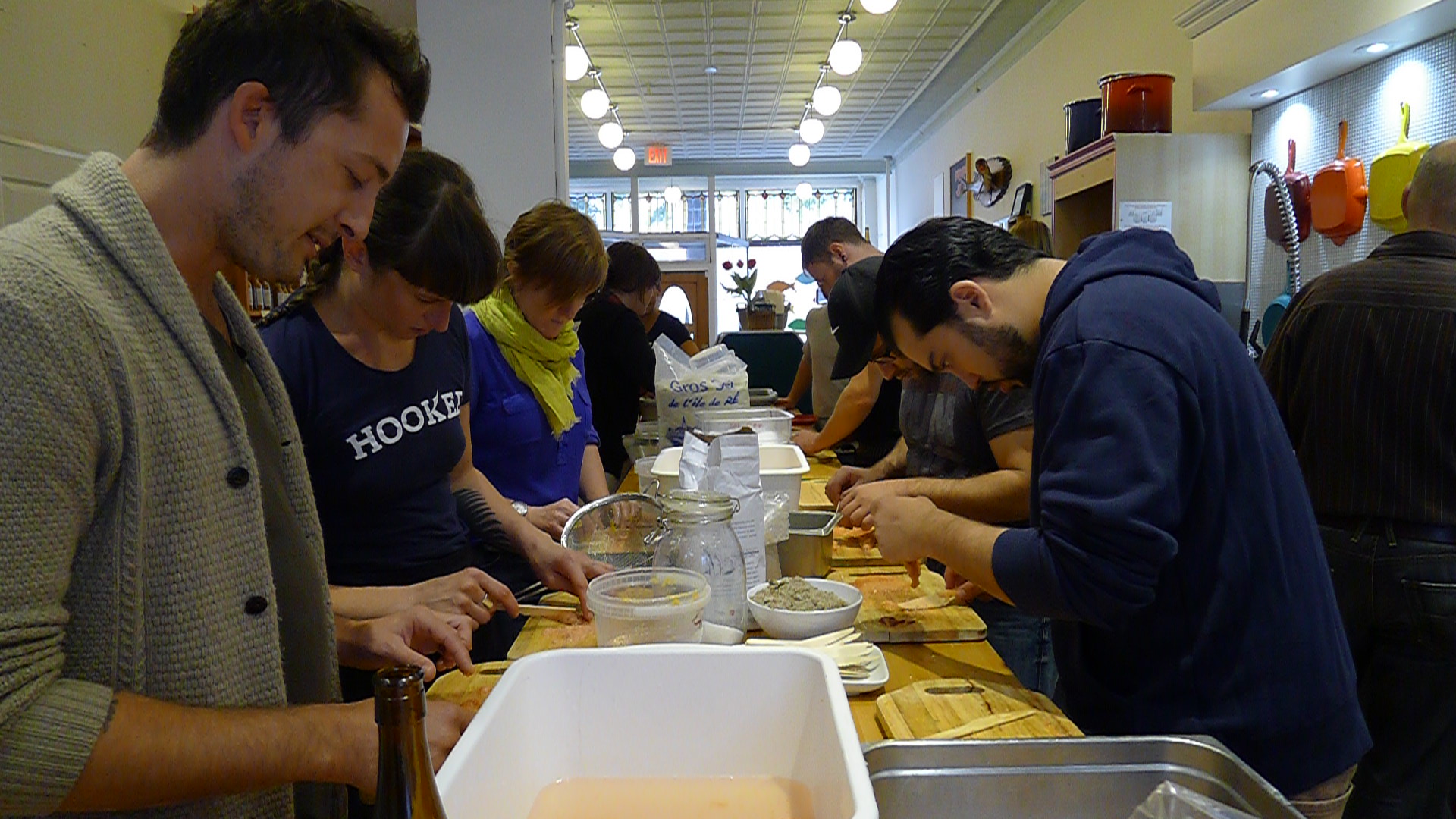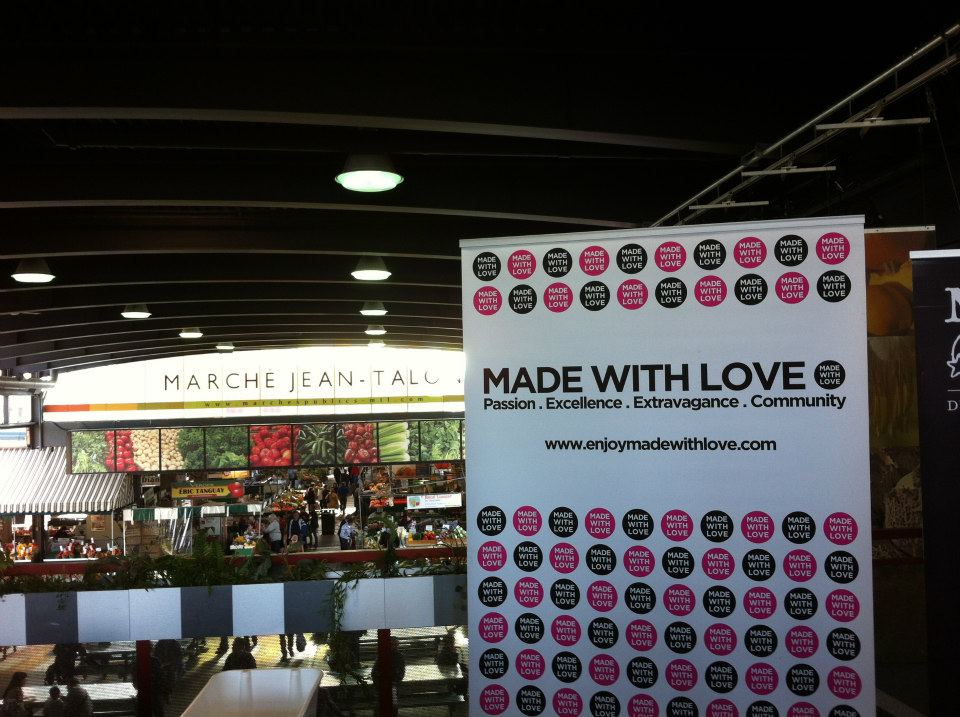Malcolm Jolley suggests the perfect way to an end a boozy lunch.
 It’s been a splendid lunch at very good restaurant with a Gallic theme. Desert menus are offered as the last drops of wine drip out of the empty bottle. Would we like something else to drink? Well, yes we would, but another bottle would lead to a complete negation of whatever needs to be done this afternoon. We could just order another glass, but that could lead to yet another… better not to risk temptation. What about a digestif? Might work, but a snifter of Armangac or Calva at 2:30 in the afternoon seems like a guaranteed recipe for nodding off at our desks. With resignation, we decide it must be coffee.
It’s been a splendid lunch at very good restaurant with a Gallic theme. Desert menus are offered as the last drops of wine drip out of the empty bottle. Would we like something else to drink? Well, yes we would, but another bottle would lead to a complete negation of whatever needs to be done this afternoon. We could just order another glass, but that could lead to yet another… better not to risk temptation. What about a digestif? Might work, but a snifter of Armangac or Calva at 2:30 in the afternoon seems like a guaranteed recipe for nodding off at our desks. With resignation, we decide it must be coffee.
There is, says our intrepid waiter, another option. It’s off the menu, since it’s not French, but it’s a quiet favourite among the cognoscenti in the fine dining industry: Fernet-Branca. With an espresso it becomes a Caffè Corretto con Fernet-Branca, or a coffee “corrected” with the Milanese amaro. And it does just the trick.
 For some reason neither Jamie nor I, nor any of our contributors, have, in the nearly seven years that GFR has been online, ever writtern about Fernet-Branca. This strikes me as odd for several reasons, including its association with Chef Fergus Henderson, who we have covered many times, and privileged place in the hearts and minds of many in the wine trade. This post aims to amend the omission, and in particular explain the virtues of the drink taken with a shot or two of espresso.
For some reason neither Jamie nor I, nor any of our contributors, have, in the nearly seven years that GFR has been online, ever writtern about Fernet-Branca. This strikes me as odd for several reasons, including its association with Chef Fergus Henderson, who we have covered many times, and privileged place in the hearts and minds of many in the wine trade. This post aims to amend the omission, and in particular explain the virtues of the drink taken with a shot or two of espresso.
Fernet-Branca is herb-infused liquor made in Milan since the middle of the 19th century. This piece from The Atlantic is as good history and description of the drink as there is. What’s important to note is its gut settling properties and it’s symbiotic pairing relationship with coffee, both of which make it the perfect way to an end a boozy lunch.
Amaro in Italian means bitter, but when paired with a bitter espresso the warmer flavours in the saffron tinged Fernet-Branca rise to the top of the palate. It actually becomes a little sweet, and returns the flavour by highlighting the caramel tones in the coffee. I don’t know how this alchemy works, and I’m not sure that it’s supposed to, but it does. To be clear: the two drinks ought not to be mixed, as in some versions of caffè corretto that use brandy or grappa. They work best off of each other with successive sips.
In Italy and Argentina the caffè corretto is considered a morning hangover cure. Fair enough, but I really do think it’s best use is as a way to avoid a hangover (or at least a worse one) by wrapping things up. There’s no where to go after a lunch finished with a caffè corretto con Fernet-Branca except back to whatever it is you were supposed to be doing with the afternoon.
 Malcolm Jolley is a founding editor of Good Food Revolution and Executive Director of Good Food Media, the company that publishes it. Follow him on Twitter or Facebook.
Malcolm Jolley is a founding editor of Good Food Revolution and Executive Director of Good Food Media, the company that publishes it. Follow him on Twitter or Facebook.







